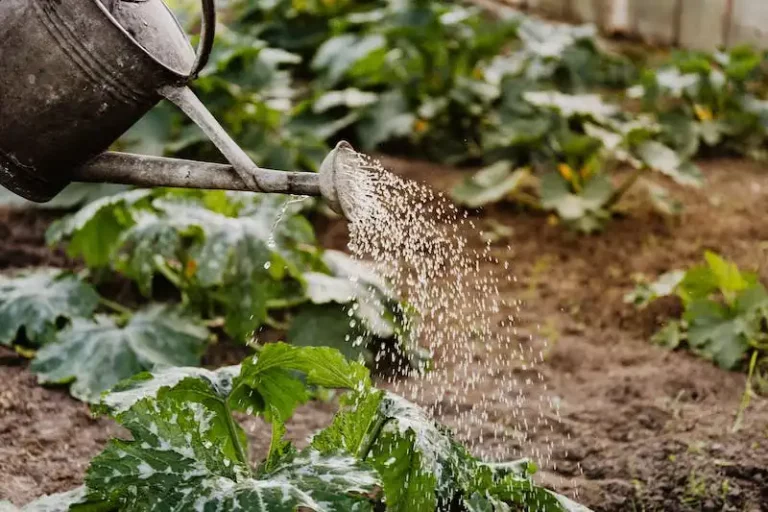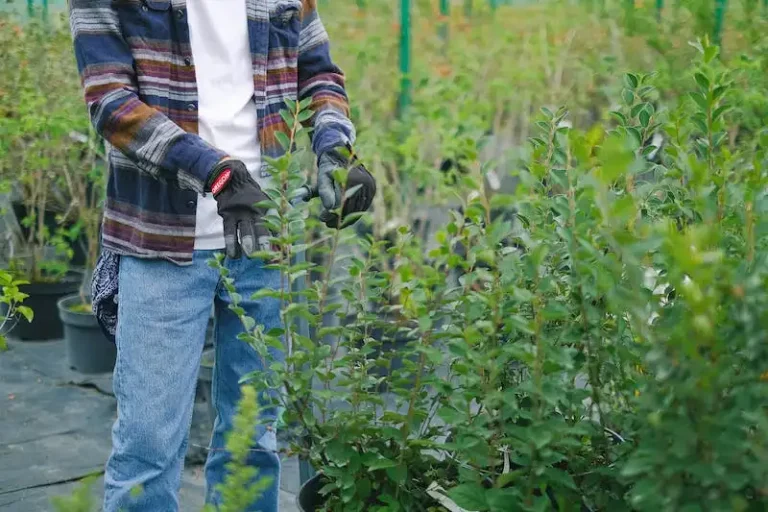Cauliflower is a popular and nutritious vegetable that can be grown in home gardens. It is a member of the Brassicaceae family, which also includes broccoli, cabbage, and kale. The scientific name for cauliflower is Brassica oleracea var. botrytis. The word “cauliflower” comes from the Latin word “caulis” for stem or cabbage, and “floris” for flower. This is because cauliflower is a flower-like plant that grows a large head of edible flower buds.
Cauliflower plants are cool-season crops that are typically grown in regions with mild winters. They can tolerate frost and thrive in temperatures between 60 to 70°F (15 to 21°C), although they can also grow in slightly warmer or colder conditions. Cauliflower plants need an average of 55 to 100 days to mature, depending on the variety. The head of cauliflower is ready to harvest when it reaches its mature size and is firm and compact.
When planting cauliflower, it is best to start with either seed or transplants. Seed can be started indoors in February or March, while transplants can be purchased from a nursery or started from seed in a starter pot. Cauliflower can be planted directly in the garden once the threat of frost has passed and the soil has warmed up. The plants should be spaced about 18 to 24 inches (46 to 61 cm) apart.
Like other brassicas, cauliflower can be susceptible to certain diseases and insect pests. Common diseases include alternaria, a fungal disease that causes ring-shaped blisters on the leaves, and black rot, which causes dark lesions on the stems and heads. Insect pests that may be a problem include aphids, cabbage worms, and flea beetles. To prevent these issues, it is recommended to practice good garden hygiene, such as removing plant debris and using disease-free seeds or transplants. Insect traps and organic pest control methods can also be used.
Author’s suggestions: To ensure successful cauliflower cultivation, it is essential to provide the plants with well-draining soil that is rich in organic matter. A pH level between 6.0 and 7.0 is ideal. Cauliflower plants also need consistent watering, typically 1 inch (2.5 cm) of water per week, especially during dry periods. Fertilizing with a nitrogen-rich liquid fertilizer can help promote healthy growth. Adding zinc to the soil can also improve cauliflower’s disease resistance. Finally, covering the plants with plastic during winter can help protect them from the cold and promote early growth in the spring.
Harvesting the cauliflower heads should be done when they are fully mature and have reached their ideal size, which is usually between 6 to 8 inches (15 to 20 cm) in diameter. Cut the head off the plant with a sharp knife, making sure to leave a few inches of the stem attached. After harvesting, cauliflower can be stored in the refrigerator for up to three weeks. It can also be blanched and frozen for longer-term storage.
Cauliflower is a versatile vegetable that can be enjoyed in a variety of ways. It can be steamed, boiled, roasted, or used in stir-fries and soups. It can also be used as a substitute for rice or mashed potatoes in low-carb recipes. With proper care and attention to pests and diseases, home gardeners can enjoy a bountiful crop of delicious and nutritious cauliflower.
Growing Cauliflower in the Garden
When it comes to home gardening, cauliflower can be a rewarding vegetable to grow. However, it requires some specific care and attention for optimal results. Allow us to guide you through the process of cultivating cauliflower in your garden.
First and foremost, cauliflower plants need plenty of sunlight to thrive. So it’s crucial to choose a location in your garden that receives at least 6 hours of direct sunlight each day. Additionally, cauliflower requires fertile, well-drained soils, so be sure to amend your soil with organic matter before planting.
Planting cauliflower can be done through direct seeding or transplanting. If you choose to start from seeds, it’s suggested to begin indoors about 4-6 weeks before your last spring frost. Transplanting can be done when the cauliflower seedlings have grown their first true leaves and are about 4-6 weeks old.
Spacing is an important consideration when it comes to growing cauliflower. Leave about 18-24 inches of space between each plant to allow ample room for growth. Ensure the soil is rich in organic matter and well-moistened before planting your cauliflower seedlings.
Cauliflower plants are susceptible to a few common problems, including aphids, brown rot, and yellow-green larvae. To control these pests, it is suggested to use natural methods such as attracting beneficial insects or using traps. In case of weed growth, be sure to remove them regularly to prevent competition for nutrients.
Once your cauliflower plants have matured, it’s time to harvest the heads. This is usually about 60-80 days after planting, depending on the variety you have chosen. To harvest, simply use a sharp knife and cut at the base of the head. If you notice the heads starting to turn yellow-green, it’s a sign that they are ready for harvest.
Proper storage of harvested cauliflower is crucial to prevent spoilage. It is suggested to wrap the heads in a plastic bag and store them in the refrigerator. Cauliflower can last up to a week when stored properly.
In conclusion, growing cauliflower in your home garden can be a fulfilling experience. Just make sure to provide the right conditions, such as fertile soil and sufficient sunlight. Take care of common pests and diseases, and harvest the heads when they have reached maturity. With proper care and attention, you’ll be enjoying your home-grown cauliflower in no time!
References:
- College of Agriculture, Auburn University. (n.d.). Cauliflower – Home Garden Cauliflower. Retrieved from https://www.aces.edu/blog/topics/home-garden-cauliflower/
- Growing Cole Crops in Southern Alberta. ( 2025). Retrieved from https://www1.agric.gov.ab.ca/$department/deptdocs.nsf/all/faq6527
Cauliflower Site Requirements
Growing cauliflower at home requires careful planning and consideration of several factors to ensure a successful harvest. Here are some site requirements to keep in mind when cultivating cauliflower:
- Site selection: Choose a site in your garden that receives full sun for at least 6 hours a day. Cauliflower prefers cool weather and may bolt in hotter areas.
- Soil: Cauliflower thrives in well-drained soils with good fertility. Prepare the soil by adding organic matter such as compost or aged manure to improve its fertility and structure.
- Seeding: Start cauliflower seeds indoors about 6-8 weeks before the last frost date. Transplant the seedlings into the garden when they have 3-4 true leaves.
- Irrigation: Cauliflower requires consistent moisture, so provide regular irrigation to keep the soil evenly moist. Avoid overwatering to prevent disease and fungal issues.
- Pest control: Monitor your cauliflower crop regularly and take necessary steps to control pests such as aphids and cabbage worms. Use organic pest control methods whenever possible.
- Disease management: Plant disease-resistant cauliflower cultivars and practice good sanitation practices to minimize the risk of diseases. Remove and destroy any diseased plants or plant debris.
- Harvesting: Harvest cauliflower when the curds are firm and compact, usually about 60-80 days from transplanting. Cut the mature heads from the plants using a sharp knife.
- Storage: Cauliflower can be stored in the refrigerator for up to a week. To freeze, blanch the cauliflower florets in boiling water for a few minutes, then transfer them into freezer bags for future use.
Remember to refer to a comprehensive gardening guide or seek suggestions from local gardening experts for more specific information on growing cauliflower in your area. Additionally, consult reliable references such as gardening books or reputable online sources for further tips and techniques.
Acknowledgment: The information provided in this article is based on general gardening principles and practices. Please consult specific product labels and guidelines for detailed instructions on the use of pest control products.
Suggested Cultivars
When choosing cauliflower varieties to plant in your home garden, it is important to consider your specific growing conditions and gardening practices. Some cultivars perform better in certain climates or soil types, while others have particular disease resistance or storage capabilities.
Here is a list of suggested cultivars for home garden cauliflower:
- Light: Varieties that can tolerate less light and still produce high-quality heads. These may be suitable for shady areas or shorter growing seasons.
- Heat Tolerant: Varieties that can withstand high temperatures and will not bolt prematurely in hot weather.
- Early Maturing: Varieties that can be harvested earlier than others, allowing for more successional plantings or extended harvest seasons.
- Cold Hardy: Varieties that can tolerate frost or light freezes without damage, extending the growing season in colder regions.
- Disease Resistant: Varieties that have been tested and shown resistance to common cauliflower diseases such as clubroot or black rot.
- Insect Resistant: Varieties that are less susceptible to insect pests, reducing the need for chemical controls or frequent monitoring.
- Storage: Varieties that store well and maintain quality for longer periods, allowing for extended use and enjoyment from your harvest.
Keep in mind that these are just suggestions, and the best cultivars for your garden will depend on your specific needs and preferences. Consult with your local cooperative extension service or experienced gardeners in your area for more recommendations.



